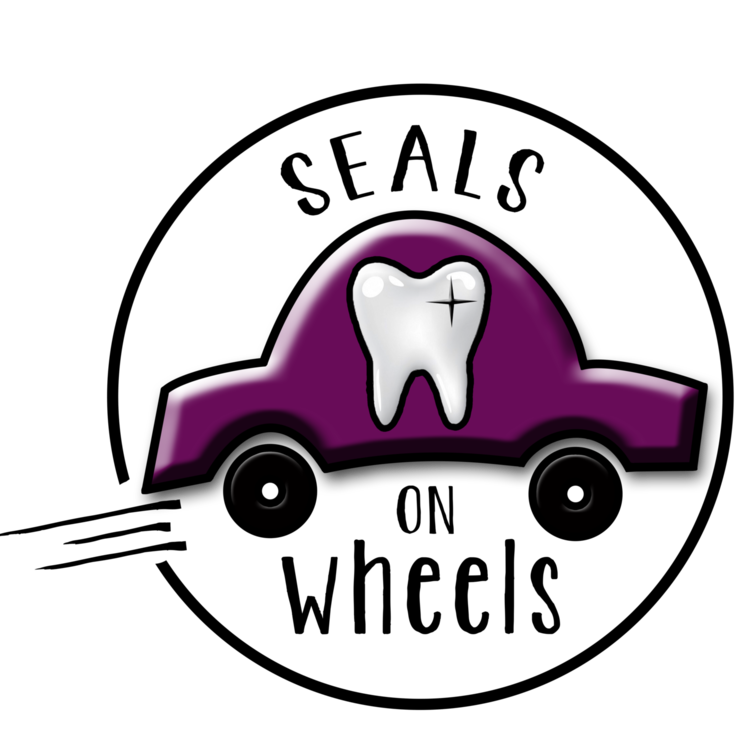General Information
Fluoride varnish being painted onto teeth
What Does Fluoride Do?
Fluoride helps prevent cavities, strengthens enamel, and aids in the development of our teeth.
We use a fluoride varnish that we “paint” on the children’s teeth. As a result of the fluoride treatment, your child may temporarily experience a sticky or fuzzy feeling on teeth, slight discoloration or yellowing, or the appearance of plaque. The kids will be able to eat and drink right away, but it is best to eat softer foods for the rest of the day. We recommend NOT to brush or floss until the following morning.
The Wisconsin Oral Health Coalition (WOHC) provides information from Tap Into Healthy Teeth, which was developed to raise public awareness on the safety and benefits of community water fluoridation among the general public, health professionals and water operators.
*Find out more info about fluoride varnish
What is Plaque?
Plaque is a colorless film that is constantly building up in your mouth. This soft and sticky substance contains a lot of bacteria, and this bacteria then uses the sugars in the food you eat to produce acids that eat away your tooth enamel. If plaque is not removed regularly through daily brushing and flossing, this leads to tooth decay (a cavity) and gum disease (gingivitis).
Why Do My Gums Bleed?
Some people's gums bleed a lot when they go to the dentist, when they floss, or even when they brush. Bloody gums are typically a sign of gingivitis (see below).
What is Gingivitis?
Also known as gum disease, gingivitis is caused from germs under the gum lining due to not flossing and brushing. The gum tissue will become red and swollen and the gums will bleed easily. If gingivitis is left untreated, it can advance into periodontitis, a more severe form of gum disease that can cause the gums and the bone supporting your teeth to break down. In the worst cases, the bone supporting the teeth is destroyed, which leads to tooth loss.
Fortunately, gingivitis is reversible with good daily flossing habits to clean out those germs, which will also stop your gums from bleeding. You'll be amazed how healthy your gums will look and feel with regular flossing. We will teach your child proper flossing techniques and also ways to hold floss to make it easier for them to control.
Periodontal scalers are used by hygienists to scrape off tartar from teeth (plaque too hard to brush off).
What is Tartar?
When plaque is not removed daily by brushing and flossing, it can harden into tartar (also called calculus), which can collect along your gum line. Once it hardens into tartar, you can no longer remove it with a toothbrush; when your dental hygienist is using their periodontal scaler (metal hook-shaped instrument pictured above), what they are doing is scraping away the tartar. With good brushing and flossing habits, your dental hygienist will have much less tartar to scrap off your teeth.
Why Do My Teeth Hurt?
Painful teeth can be a sign of advancing problems. This program provides preventative care, which includes dental screenings, teeth cleanings, sealants, and fluoride varnishes. Although this program focuses on prevention, we look for more serious dental issues during the screening, such as a cavity (tooth decay) or dental abscess, both of which would cause pain. An abscess originates from a bacteria infection, and the resulting accumulation of pus that forms in the teeth or gums can create serious problems if left untreated. Gums disease, known as gingivitis, can also cause pain when the gums surrounding the teeth become infected. When we find serious issues we notify parents of the need to see a dentist and we also help in finding an office accepting patients.
Is the Whole Family Brushing?
Children need to learn the habit of brushing twice a day for 2 minutes each time using a small circular motion. Brush in the MORNING. Brush at NIGHT. Nighttime brushing is most important since you don’t want germs on your teeth for 8 hours while you sleep.
Parents need to be in the same brushing habits as the children. Good oral hygiene should be taught at home. It is recommended for parents to help children with brushing and flossing until the age of 9 .
Visit the American Dental Association for additional information regarding oral health
